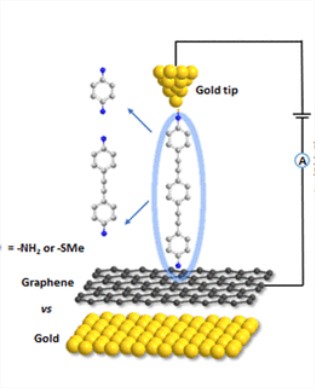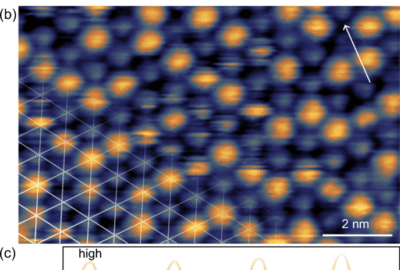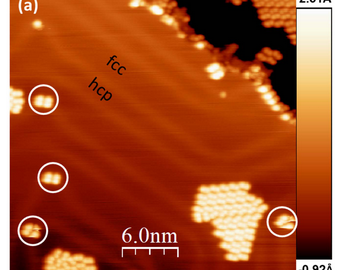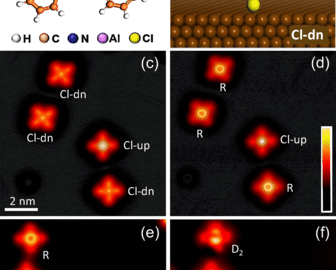publications
Asymmetric Effect on the Length Dependence of Oligo(Phenylene ethynylene)-Based Molecular Junctions
It is well known that the electrical conductance of molecular junctions in the tunneling regime varies exponentially with the length of the molecular backbone. This behavior is strongly influenced by anchoring groups, which connect the molecular backbone to the electrodes and locate the highest occupied molecular orbital (HOMO) and lowest unoccupied molecular orbital (LUMO) resonances with respect to the Fermi level. Nevertheless, most of the studies have been performed on symmetric junctions, namely, using the same electrodes and anchoring groups at both sides of the junctions. Only recently, there have been some reports detailing the influence of introducing asymmetry into single-molecule junctions, using different contacts or different anchoring groups at either end of the molecular bridge. These studies have revealed that such junction asymmetry strongly impacts electrical characteristics. In this study, Au and graphene electrodes were used to provide asymmetry to a single-molecule junction. The conductance and length dependence of amine and methyl sulfide-terminated oligo(phenylene ethynylene) have been determined experimentally and theoretically. The impact of introducing this asymmetry has been quantified by comparing the conductance and β values of oligo(phenylene ethynylene) (OPE)-based molecules within Au/Au electrodes and Au/graphene junctions, respectively. Our results show that the introduction of a graphene electrode leads to lower conductance values and attenuation factors, similar to what has been previously observed in alkane chains. This is attributed to a shift of the electronic molecular levels toward the Fermi level, mainly driven by acetylene groups linking adjacent phenyl groups.
Yinqi Fan, Sylvain Pitie, Chenguang Liu, Cezhou Zhao, Chun Zhao, Mahamadou Seydou, Yannick J. Dappe, Richard J. Nichols, Li Yang
Comments are closed







